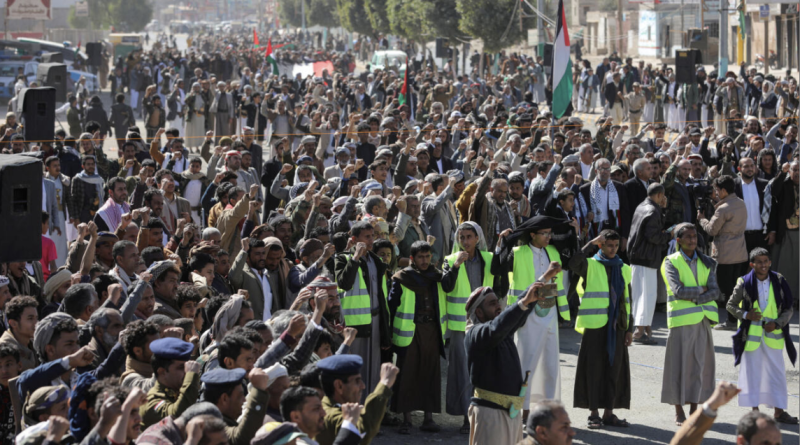Trump Administration Taking the Fight to Al-Qaeda in Yemen


Photo: President Donald Trump speaks with Secretary of Defense James Mattis. (Photo: Erik S. Lesser /EPA/Newscom)
The Trump administration has escalated the long-standing U.S. counterterrorism campaign in Yemen, a failed state that has slipped into anarchy amidst a multi-sided war.
In recent days, the Pentagon has launched over 40 airstrikes against leaders and bases of al-Qaeda in the Arabian Peninsula, regarded by U.S. intelligence officials as the most dangerous of al-Qaeda’s many franchises.
The airstrikes followed the Jan. 28 commando raid staged by Navy SEALs that killed several of the terror group’s leaders, as well as some Yemeni civilians sheltering with those leaders and Chief Petty Officer William “Ryan” Owens.
The intensifying counterterrorism campaign is aimed at reversing the expansion of al-Qaeda in the Arabian Peninsula in southern Yemen, where it has flourished in recent years due to the ouster of Yemen’s government from the capital city of Sanaa by Iranian-supported Houthi rebels in 2014.
The weakened government, led by President Abdu Rabbu Mansour Hadi, has cooperated with the U.S. against al-Qaeda in the Arabian Peninsula but has focused most of its military efforts against the Houthis.
Yemen’s growing anarchy forced the United States in 2015 to withdraw its embassy and a small contingent of special operations forces that had been gathering intelligence and launching drone strikes against al-Qaeda in the Arabian Peninsula. This allowed the terror group to expand in a more permissive environment.
In March 2015, Saudi Arabia assembled a multinational military coalition that intervened in Yemen to back the Hadi government against the Houthi rebels, which the Saudis saw as proxies of their archrival Iran.
This intervention dislodged al-Qaeda in the Arabian Peninsula from some cities it had occupied in southern Yemen, but the group continued to grow in mountainous rural areas, often in alliance with fiercely independent Sunni Arab tribes.
The Extent of Al-Qaeda’s Threat
Yemen, Osama bin Laden’s ancestral homeland, has long been a bastion of support for Islamist extremism in general and al-Qaeda in particular. Many Yemenis who migrated to Saudi Arabia to find work during the 1970s oil boom were exposed to radicalization there.
Yemenis made up a disproportionate number of the estimated 25,000 foreign Muslims who flocked to Afghanistan to join the war against the Soviet occupation in the 1980s. They also make up a large segment of al-Qaeda, which was founded by veterans of that war to launch a global revolutionary insurgency.
Al-Qaeda’s first terrorist attack against Americans occurred in Yemen in December 1992, when a bomb was detonated in a hotel used by U.S. military personnel involved in supporting the humanitarian food relief flights to Somalia.
Al-Qaeda launched a much deadlier attack in Yemen in October 2000 when it attacked the USS Cole in the port of Aden with a boat filled with explosives, killing 17 American sailors.
One of al-Qaeda in the Arabian Peninsula’s leaders, Anwar al-Awlaki, inspired many terrorist attacks inside the United States and elsewhere before he was killed in a drone strike in 2011.
A charismatic Yemeni-American radical Islamist preacher, Awlaki served as the “spiritual guide” of at least two of the 9/11 hijackers inside the United States before moving to Yemen in 2004.
In Yemen, he received the protection of his father’s kinsmen, the powerful Awlaki tribe, which also counted bin Laden’s father as one of its members.
Awlaki was linked to many terrorist attacks in the U.S., including the 2009 shootings at Fort Hood by Maj. Nidal Hasan that killed 13 people, the botched 2009 Christmas Day attack by the “underwear bomber” who sought to destroy a passenger airliner over Detroit, and the failed attempt to detonate a car bomb in New York’s Times Square in May 2010.
After his death, Awlaki’s videotaped lectures continued to inspire Islamist terrorist attacks, including the April 2013 bombing of the Boston Marathon that killed three people and injured over 260, the July 2015 fatal shootings of four Marines and a Navy sailor at a military recruiting office in Chattanooga, Tennessee, and the December 2015 terrorist attack in San Bernardino, California, that killed 14 people.
His lectures also inspired the June 2016 shootings of 49 people in a nightclub in Orlando, Florida, and the September 2016 bombing that injured 29 people in New York City.
Al-Qaeda in the Arabian Peninsula also pioneered sophisticated bomb-making techniques that allowed it to smuggle at least three undetected bombs onto aircraft bound for the United States: the “underwear bomber” in 2009, and two cargo aircraft in 2010.
In 2012, U.S. officials announced that al-Qaeda in the Arabian Peninsula had perfected a bomb that had no metal parts, allowing it to be smuggled through metal detectors.
This deadly combination of bomb-making sophistication and terrorist incitement has made al-Qaeda in the Arabian Peninsula a high-priority target for American counterterrorism officials. The Trump administration now is ratcheting up airstrikes and special operations raids against the group to reduce its ability to launch future terrorist attacks.Daily Signal

Sana'a -- The Houthi militias in Sana’a, Yemen, announced the death of several of their military commanders, without disclosing the location…

Aden – Yemen’s Ministry of Foreign Affairs has welcomed the latest statement issued by the United Nations Security Council regarding th…

London – The United Kingdom has welcomed the latest statement issued by the UN Security Council on Yemen, stressing the urgent need for the H…